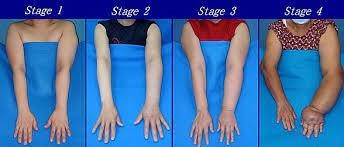The nurse is preparing a teaching plan for a client who is newly diagnosed with Type 1 diabetes mellitus. Which signs and symptoms should the nurse describe when teaching the client about hypoglycemia?
Fruity breath, tachypnea, chest pain.
Oliguria, polydipsia, polyphagia.
Sweating, cold, trembling, tachycardia.
Nausea, vomiting, anorexia.
The Correct Answer is C
Choice A rationale: These symptoms are more indicative of diabetic ketoacidosis, not hypoglycemia.
Choice B rationale: Symptoms of increased urination, thirst, and hunger are more associated with hyperglycemia, not hypoglycemia.
Choice C rationale: These are classic signs of hypoglycemia and should be described to the client for early recognition and intervention.
Choice D rationale: These symptoms can occur in hypoglycemia but are less specific compared to sweating, cold, trembling, and tachycardia.
Nursing Test Bank
Naxlex Comprehensive Predictor Exams
Related Questions
Correct Answer is B
Explanation
Choice A rationale: Localization of pain refers to the ability of an individual to pinpoint the exact location of pain, which is different from the described response.
Choice B rationale: Decorticate posturing involves the arms flexing inward toward the body, which is consistent with the observed response to nail bed pressure.
Choice C rationale: Decerebrate posturing involves extension and outward rotation of the arms, which is different from the described response.
Choice D rationale: Flexion withdrawal typically involves pulling away from a painful stimulus, which differs from the specific response observed in the scenario.
Correct Answer is B
Explanation
Choice A rationale: Her healthcare provider prescribing a calcium channel blocker for hypertension is not directly linked to lymphedema.
Choice B rationale: Sustaining an insect bite to her left arm yesterday - Trauma or injury, such as an insect bite, to the affected limb post-mastectomy can increase the risk of
lymphedema.
Choice C rationale: Losing twenty pounds since the surgery might influence overall health but doesn’t specifically relate to lymphedema.
Choice D rationale: Her hobby of playing classical music on the piano is unrelated to the risk of developing lymphedema.

Whether you are a student looking to ace your exams or a practicing nurse seeking to enhance your expertise , our nursing education contents will empower you with the confidence and competence to make a difference in the lives of patients and become a respected leader in the healthcare field.
Visit Naxlex, invest in your future and unlock endless possibilities with our unparalleled nursing education contents today
Report Wrong Answer on the Current Question
Do you disagree with the answer? If yes, what is your expected answer? Explain.
Kindly be descriptive with the issue you are facing.
